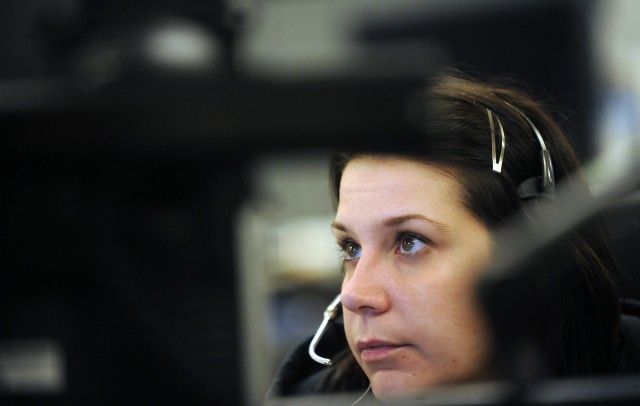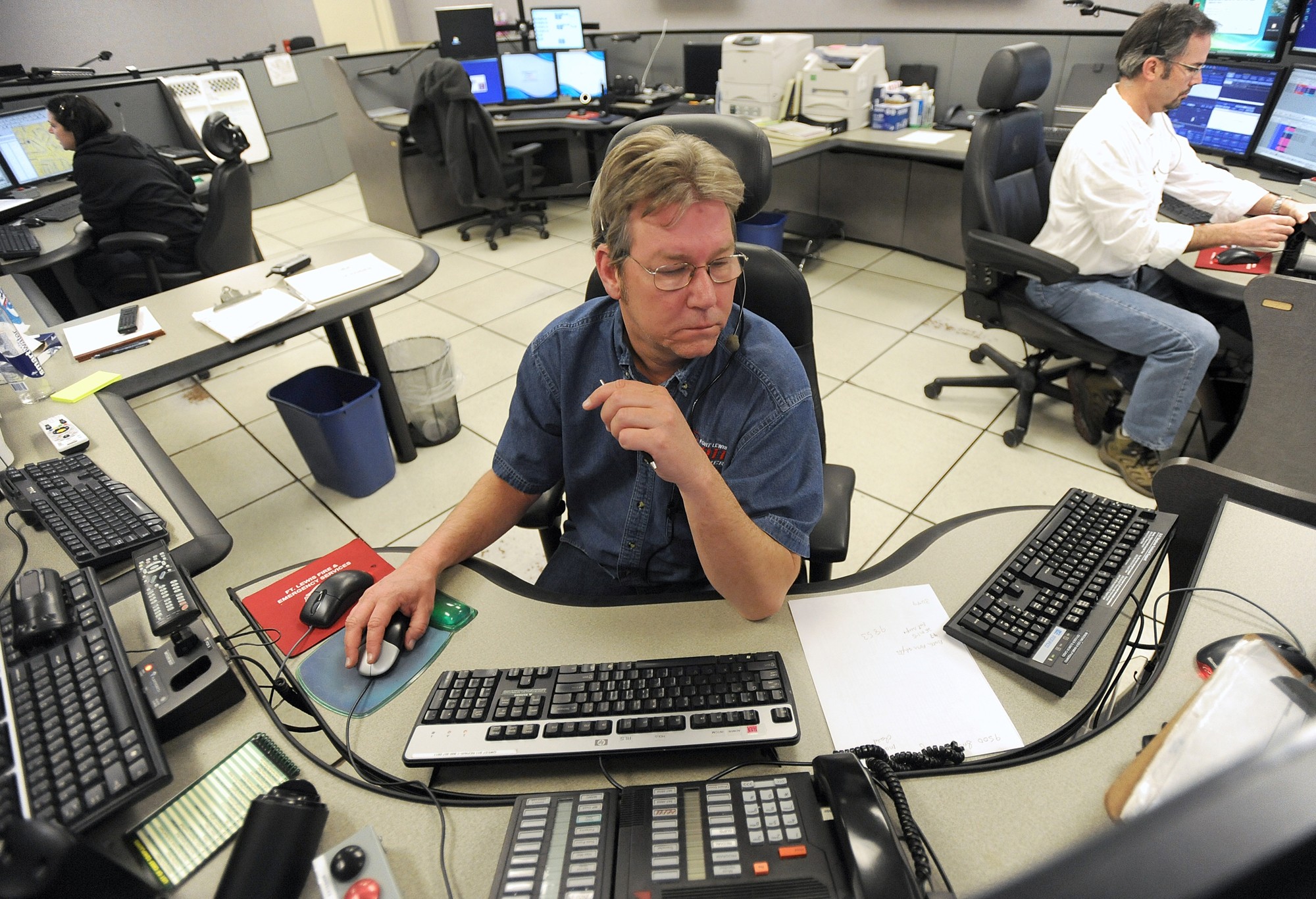JOINT BASE LEWIS-McCHORD, Wash. -- A major consolidation of the Joint Base Lewis-McChord 9-1-1 call answering service took place early Wednesday morning and because everything went according to plan, no one noticed the change.
Now, those calling 9-1-1 for any reason from either Lewis or McChord will talk to an operator at the Emergency Communications Center near the new Fire Station on Lewis-Main.
The consolidation brings better access to everyone on JBLM and positions the base for future upgrades when digital 9-1-1 technologies improve, said Jeff Rodeman, Directorate of Emergency Services' Emergency Communications Center chief.
Before the merger, people dialing 9-1-1 on base either spoke to Lewis civilian emergency operators or McChord active-duty Airmen. Deployments and reassignments pulled them away from the 9-1-1 desk, leaving service gaps to fill.
The consolidation now has one location where all calls terminate, providing the same level of service across the joint base. Civilian operators use nationally recognized standardized questions to gather information and dispatch fire, medical or law enforcement help through state-of-the-art digital telephonic software. McChord law enforcement personnel will still respond to calls on McChord, but they will be dispatched from Lewis, Rodeman said.
"The only thing different at McChord is that they'll hear Lewis-McChord," Rodeman said. "I hope that we can get a better product out to the customer with this consolidation."
Emergency Communications operators answered nearly 20,000 9-1-1 calls last year, and seven times that number for administrative non-emergency calls. All police phone lines now run into the call center because in the past, real emergencies were being reported over administrative lines, which delayed emergency services' response time. The 9-1-1 center averages 30,000 law enforcement dispatches a year, and close to 10,000 fire and medical calls. Emergency Communications Center Supervisor Kevin Sibbitt has worked as a dispatcher since 1992.
"You never know what's going to happen when the phone rings," Sibbitt said. "We get to reach out to so many people and help them in their time of need."
Communications staff members expect those numbers will only increase with McChord consolidated with Lewis.
Consumer expectations of 9-1-1 capabilities are outpacing what current emergency communications can do. That's why JBLM is ready for the 21st Century as the communications center upgraded to the advanced 9-1-1 system.
It's more than just an emergency operator seeing a cell phone caller's name and location when they dial 9-1-1. Fiber-optic T-1 data lines allowing massive amounts of information to flow at the speed of light reduce seconds from the time the dialer presses "Send" to when the emergency operator answers "Lewis-McChord 9-1-1."
A logging reporter within the communications center immediately starts recording during the one or two seconds it takes for a caller to reach the switchboard, so any information not repeated to the operator is picked up by the recorder. And eventually, those needing help can text 9-1-1 their emergencies (it currently doesn't work anywhere in the country), or send photos or videos directly to the police.
"Immediacy is very important in our world: saving 10 to 15 seconds a call, pictures, texting, cutting down dispatching time, especially in emergency services - very cool," Rodeman said. "We have a very robust, cutting-edge, top-of-the-line system here, and people need to know it."
Lorin T. Smith: lorin.smith@us.army.mil




Social Sharing